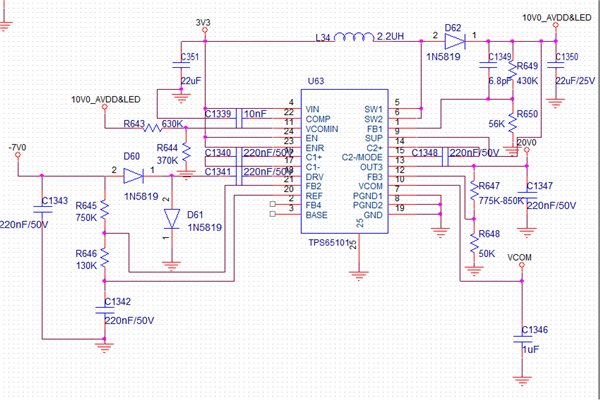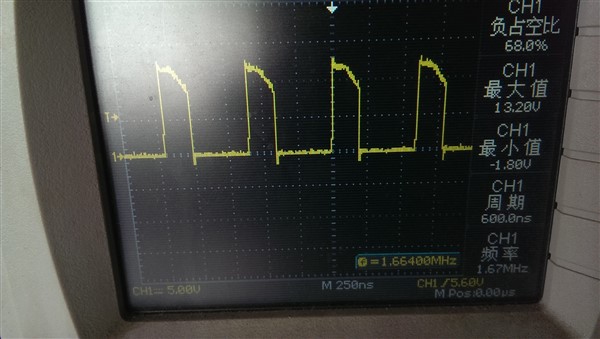Hello,
I'm designing a LCD driver with TPS65101. Below is the SCH. ENR is pulled low and inductor is 4.7uH
When the LCD screen is not connected (no load), the SW1/SW2 waveform is as below shows. It looks abnormal and the duty is 68% which is CCM. Does it mean SUP pin consume a heavy load and the boost converter is not DCM even without the LCD screen connected?
After I connect the LCD screen, the SW waveform looks normal, but case temperature rise of TPS65101, inductor and schottky(1N5819) is about 60℃! I changed some types of the inductor, but no improvement. I didn't find the recovery time of schottky(1N5819) in the datasheet. I also found the fsw of the boost converter with LCD screen connected is a little higher than no load(1.8MHz and 1.6MHz).
From the spec of this LCD screen, AVDD requires 10V/200mA. There is a large heat sink area in PCB layout for TPS65101.
I need your information on two points.
1. Could you confirm on the EVM that, without LCD screen (AVDD is no load), the boost converter works in CCM(SUP is heavy load)?
2. Any idea I could try to locate the issue?
Thanks.



